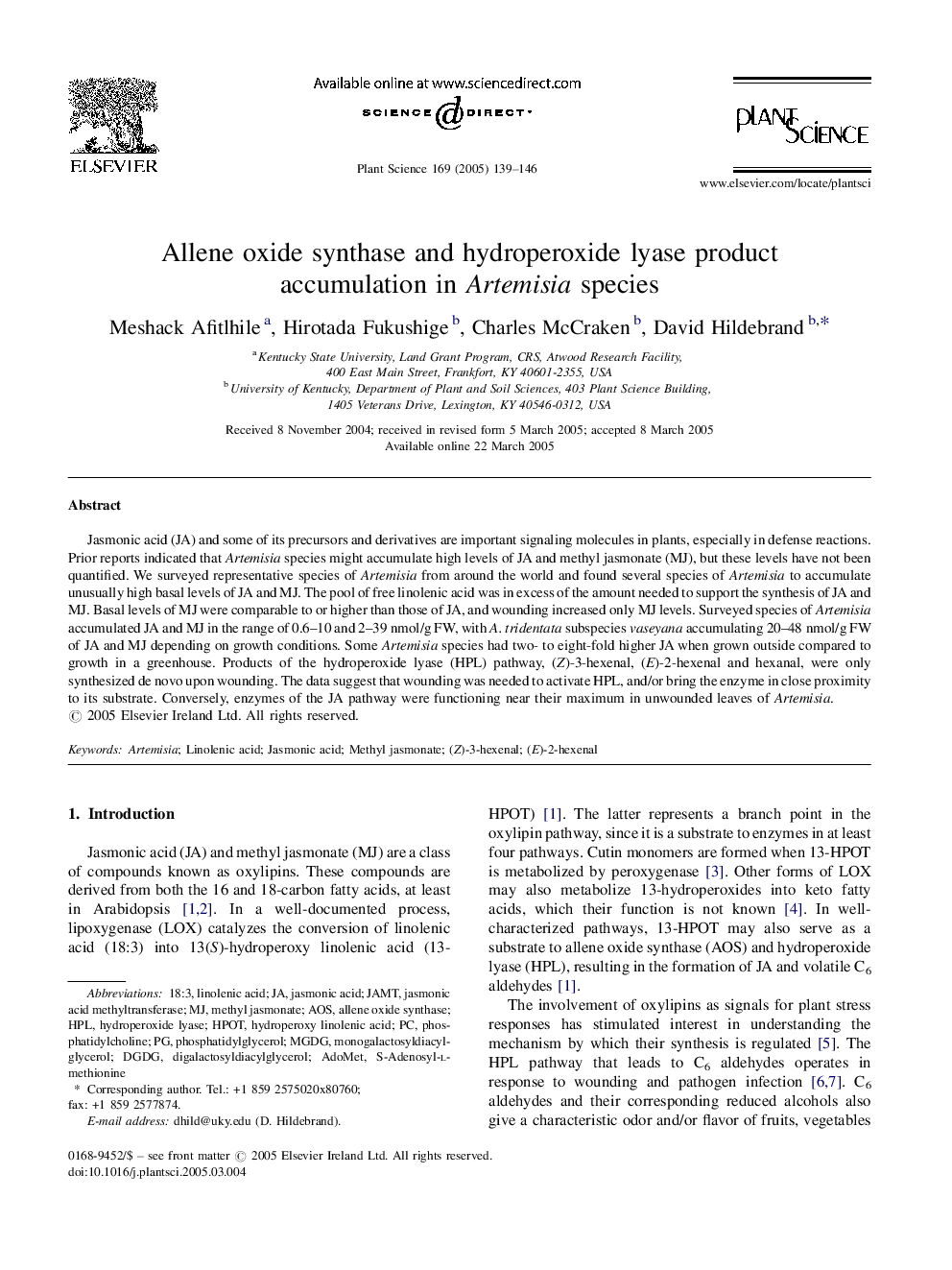| کد مقاله | کد نشریه | سال انتشار | مقاله انگلیسی | نسخه تمام متن |
|---|---|---|---|---|
| 10841984 | 1067908 | 2005 | 8 صفحه PDF | دانلود رایگان |
عنوان انگلیسی مقاله ISI
Allene oxide synthase and hydroperoxide lyase product accumulation in Artemisia species
دانلود مقاله + سفارش ترجمه
دانلود مقاله ISI انگلیسی
رایگان برای ایرانیان
کلمات کلیدی
DGDGdigalactosyldiacylglycerolMGDGmonogalactosyldiacylglycerolHPLAdoMet(E)-2-hexenal - (E) -2-هگزنال18:3 - 18: 3S-adenosyl-L-methionine - S-adenosyl-L-metionineArtemisia - آرتمیسیاjasmonic acid - اسید جاسونیکLinolenic acid - اسید لینولینیکAOS - بهAllene oxide synthase - سنتاز اکسید آلنphosphatidylcholine - فسفاتیدیل کولینphosphatidylglycerol - فسفاتیدیل گلیسرولMethyl jasmonate - متیل جاسموناتHydroperoxide lyase - هیدروپراکسید لیاز
موضوعات مرتبط
علوم زیستی و بیوفناوری
علوم کشاورزی و بیولوژیک
دانش گیاه شناسی
پیش نمایش صفحه اول مقاله

چکیده انگلیسی
Jasmonic acid (JA) and some of its precursors and derivatives are important signaling molecules in plants, especially in defense reactions. Prior reports indicated that Artemisia species might accumulate high levels of JA and methyl jasmonate (MJ), but these levels have not been quantified. We surveyed representative species of Artemisia from around the world and found several species of Artemisia to accumulate unusually high basal levels of JA and MJ. The pool of free linolenic acid was in excess of the amount needed to support the synthesis of JA and MJ. Basal levels of MJ were comparable to or higher than those of JA, and wounding increased only MJ levels. Surveyed species of Artemisia accumulated JA and MJ in the range of 0.6-10 and 2-39Â nmol/g FW, with A. tridentata subspecies vaseyana accumulating 20-48Â nmol/g FW of JA and MJ depending on growth conditions. Some Artemisia species had two- to eight-fold higher JA when grown outside compared to growth in a greenhouse. Products of the hydroperoxide lyase (HPL) pathway, (Z)-3-hexenal, (E)-2-hexenal and hexanal, were only synthesized de novo upon wounding. The data suggest that wounding was needed to activate HPL, and/or bring the enzyme in close proximity to its substrate. Conversely, enzymes of the JA pathway were functioning near their maximum in unwounded leaves of Artemisia.
ناشر
Database: Elsevier - ScienceDirect (ساینس دایرکت)
Journal: Plant Science - Volume 169, Issue 1, July 2005, Pages 139-146
Journal: Plant Science - Volume 169, Issue 1, July 2005, Pages 139-146
نویسندگان
Meshack Afitlhile, Hirotada Fukushige, Charles McCraken, David Hildebrand,